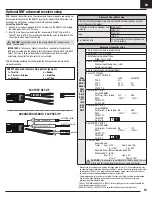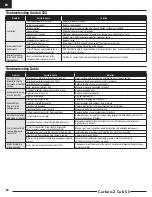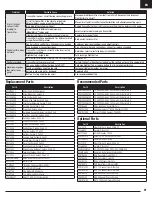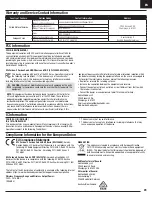
EN
15
IMPORTANT:
Perform the Control Direction Test before performing control surface
centering.
While SAFE is inactive, mechanically center the control surfaces.
IMPORTANT:
Correct operation of the SAFE system requires sub-trim and trim at 0.
After binding a transmitter to the airplanes receiver, set the trims and sub-trims to
0, ensure the servo arms are in the correct positions, then adjust the linkages to
center the control surfaces.
• Turn the linkage clockwise
or counterclockwise until the
control surface is centered.
• Attach the linkage to the
servo arm or control horn
after adjustment
Control Surface Centering and Adjusting a Ball Link
Control Direction Test
Switch on the transmitter and connect the battery. Use the transmitter to operate the
aileron, elevator and rudder controls. View the aircraft from the rear when checking
the control directions.
Elevator
1. Pull the elevator stick back. The elevators should move up, which will cause the
aircraft to pitch up.
2. Push the elevator stick forward. The elevators should move down, which will
cause the aircraft to pitch down.
Ailerons
1. Move the aileron stick to the left. The left aileron should move up and the right
aileron down, which will cause the aircraft to bank left.
2. Move the aileron stick to the right. The right aileron should move up and the left
aileron down, which will cause the aircraft to bank right.
Rudder
1. Move the rudder stick to the left. The rudder should move to the left, which will
cause the aircraft to yaw left.
2. Move the rudder stick to the right. The rudder should move to the right, which
will cause the aircraft to yaw right.
Flaps
1. Move your flap control switch down to the “half flaps” position.
2. Confirm that the wing flaps move down.
3. Move flap control switch to the “full flaps” position.
4. Confirm the flaps move farther down than in step two.
Transmitter
command
Control Surface
Response
Elev
ator
Aileron
Rudder
Flaps
























